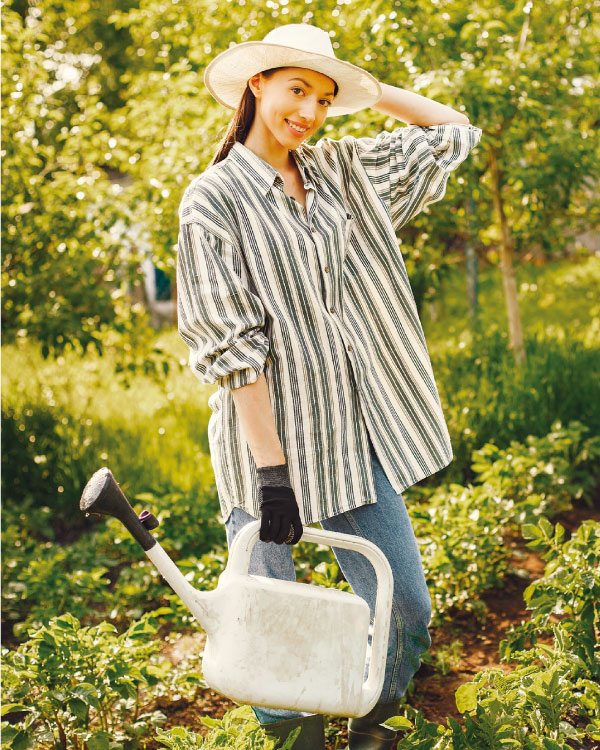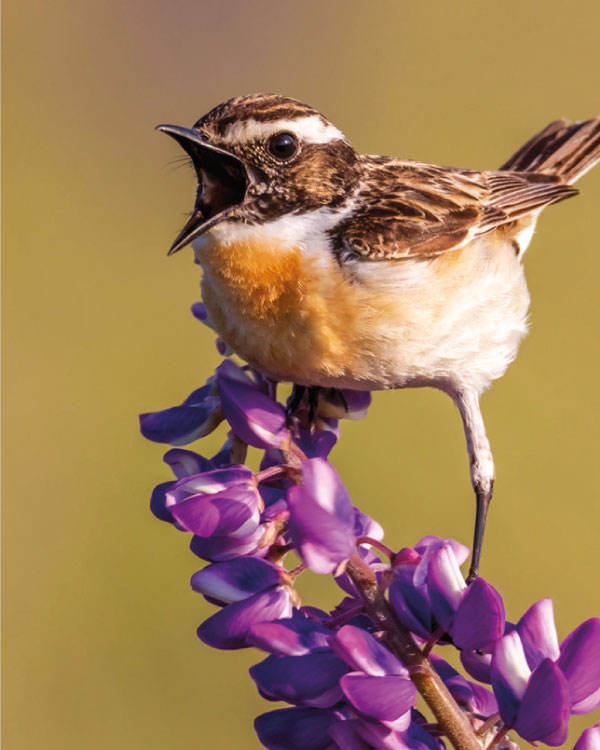BAHAR – Yavuz Tarakçıoğlu
The spring is the season that people living in the northern hemisphere are eagerly waiting for. The food that people and animals eat, the fuel they store for heating and heating food during the winter months are decreased, the longing for green, grass, meadow-grass is increased.
The spring means the warming of the weather, the melting of the snow covering all sides, the awakening of the hibernating animals. With the spring, migratory birds will return and the soil will turn green.


Our teacher Prof.Dr.Bahaeddin Öğel, in the second book of his famous work, Introduction to the History of Turkish Culture, tells the Turks’ love of soil, greenery and spring, while asking each other the ages of the Karakhanids, they asked instead “How old are you?” “How many greens have you seen?”.
Therefore, many societies and countries that lived in the northern hemisphere started the spring and the New Year on the 21st and 22nd of March and celebrated that day with a feast. For example, the calendar of the Ancient Iranians begins on the 22nd day of March.
The day they call Nowruz is the first day of the year and spring. People go out to the countryside and have fun and celebrate, picking violets, the first flowers of the year.

The word “age” that we use today is also related to spring. Our teacher Prof.Dr.Bahaeddin Öğel, in the second book of his famous work, Introduction to the History of Turkish Culture, tells the Turks’ love of soil, greenery and spring, while asking each other the ages of the Karakhanids, they asked instead “How old are you?” “How many greens have you seen?” He draws attention to the relevance of the word age with green, and explains with examples the respect and love given by our ancestors to the love of soil and trees at the level of holiness. Nowadays, we think of olive trees that are recommended to be cut down for mining.
In the Northern hemisphere, including our country, the winter season begins on December 21 and ends on March 21.
On March 21, the day and night hours are equal.
The new season, which starts on March 22 and lasts until June 22, is called spring, spring or first summer.
The spring is the season that people living in the northern hemisphere are eagerly waiting for. The food that people and animals eat, the fuel they store for heating and heating food during the winter months are decreased, the longing for green, grass, meadow-grass is increased.
The spring means the warming of the weather, the melting of the snow covering all sides, the awakening of the hibernating animals. With the spring, migratory birds will return and the soil will turn green.


Our teacher Prof.Dr.Bahaeddin Öğel, in the second book of his famous work, Introduction to the History of Turkish Culture, tells the Turks’ love of soil, greenery and spring, while asking each other the ages of the Karakhanids, they asked instead “How old are you?” “How many greens have you seen?”.
Therefore, many societies and countries that lived in the northern hemisphere started the spring and the New Year on the 21st and 22nd of March and celebrated that day with a feast. For example, the calendar of the Ancient Iranians begins on the 22nd day of March.
The day they call Nowruz is the first day of the year and spring. People go out to the countryside and have fun and celebrate, picking violets, the first flowers of the year.

The word “age” that we use today is also related to spring. Our teacher Prof.Dr.Bahaeddin Öğel, in the second book of his famous work, Introduction to the History of Turkish Culture, tells the Turks’ love of soil, greenery and spring, while asking each other the ages of the Karakhanids, they asked instead “How old are you?” “How many greens have you seen?” He draws attention to the relevance of the word age with green, and explains with examples the respect and love given by our ancestors to the love of soil and trees at the level of holiness. Nowadays, we think of olive trees that are recommended to be cut down for mining.
Kış aylarında insanların ve hayvanların beslendikleri yiyecekler, ısınmak ve yemek ısıtmak için depoladıkları yakacaklar azalmış, yeşile, ota, çayır-çimene duyulan özlem artmıştır.
Bahar, havaların az da olsa ısınması, her yanı örten karların erimesi, kış uykusuna yatan av hayvanlarının uyanıp, ortaya çıkması demektir. Baharla birlikte göçmen kuşlar geri dönecek, toprak yeşerecektir.
Bu nedenle Kuzey yarım kürede yaşamış birçok toplum ve ülke baharı ve yeni yeni yılı Mart ayının 21. Ve 22ci günü başlatmış ve o günü bayram yaparak kutlamıştır.


Karahanlıların birbirlerine yaşlarını sorarken “Kaç yaşındasın?” yerine, “Kaç yeşil gördün?” dediklerini aktarır.
Söz gelişi Eski İranlıların takvimi Martın 22. günü başlar. Nevruz adını verdikleri o gün yılın ve baharın ilk günüdür. İnsanlar kırlara çıkıp eğlenerek bayram yapar, yılın ilk çiçekleri olan menekşelere toplar.
Günümüzde kullandığımız “yaş” sözcüğüde baharla ilgilidir.
Prof.Dr.Bahaeddin Öğel hocamız ünlü eseri Türk Kültür Tarihine Giriş serisinin 2. kitabında Türklerin toprak, yeşillik ve bahar sevgisine anlatırken Karahanlıların birbirlerine yaşlarını sorarken “Kaç yaşındasın?” yerine, “Kaç yeşil gördün?” dediklerini aktarır.

Yaş sözcüğünün yeşil ile ilgisine dikkat çeker, atalarımızın toprak ve ağaç sevgisine verdikleri Kutsallık derecesindeki saygı ve sevgiye örneklerle anlatır. Aklımıza günümüzde maden aramak için kesilmeleri önerilen zeytin ağaçları gelir.
In the Northern hemisphere, including our country, the winter season begins on December 21 and ends on March 21.
On March 21, the day and night hours are equal.
The new season, which starts on March 22 and lasts until June 22, is called spring, spring or first summer.
The spring is the season that people living in the northern hemisphere are eagerly waiting for. The food that people and animals eat, the fuel they store for heating and heating food during the winter months are decreased, the longing for green, grass, meadow-grass is increased.
The spring means the warming of the weather, the melting of the snow covering all sides, the awakening of the hibernating animals. With the spring, migratory birds will return and the soil will turn green.


Our teacher Prof.Dr.Bahaeddin Öğel, in the second book of his famous work, Introduction to the History of Turkish Culture, tells the Turks’ love of soil, greenery and spring, while asking each other the ages of the Karakhanids, they asked instead “How old are you?” “How many greens have you seen?”.
Therefore, many societies and countries that lived in the northern hemisphere started the spring and the New Year on the 21st and 22nd of March and celebrated that day with a feast. For example, the calendar of the Ancient Iranians begins on the 22nd day of March.
The day they call Nowruz is the first day of the year and spring. People go out to the countryside and have fun and celebrate, picking violets, the first flowers of the year.

The word “age” that we use today is also related to spring. Our teacher Prof.Dr.Bahaeddin Öğel, in the second book of his famous work, Introduction to the History of Turkish Culture, tells the Turks’ love of soil, greenery and spring, while asking each other the ages of the Karakhanids, they asked instead “How old are you?” “How many greens have you seen?” He draws attention to the relevance of the word age with green, and explains with examples the respect and love given by our ancestors to the love of soil and trees at the level of holiness. Nowadays, we think of olive trees that are recommended to be cut down for mining.
Ülkemizin de içinde bulunduğu Kuzey yarımkürede kış mevsimi 21 aralık günü başlar, 21 Mart günü sona erer.
22 Mart günü başlayan ve 22 hazirana kadar sürecek olan yeni mevsime bahar, ilkbahar ya da ilk yaz denir.
Bahar, kuzey yarımkürede yaşayan insanların merakla bekledikleri mevsimdir.
Kış aylarında insanların ve hayvanların beslendikleri yiyecekler, ısınmak ve yemek ısıtmak için depoladıkları yakacaklar azalmış, yeşile, ota, çayır-çimene duyulan özlem artmıştır.
Bahar, havaların az da olsa ısınması, her yanı örten karların erimesi, kış uykusuna yatan av hayvanlarının uyanıp, ortaya çıkması demektir. Baharla birlikte göçmen kuşlar geri dönecek, toprak yeşerecektir.
Bu nedenle Kuzey yarım kürede yaşamış birçok toplum ve ülke baharı ve yeni yeni yılı Mart ayının 21. Ve 22ci günü başlatmış ve o günü bayram yaparak kutlamıştır.


Karahanlıların birbirlerine yaşlarını sorarken “Kaç yaşındasın?” yerine, “Kaç yeşil gördün?” dediklerini aktarır.
Söz gelişi Eski İranlıların takvimi Martın 22. günü başlar. Nevruz adını verdikleri o gün yılın ve baharın ilk günüdür. İnsanlar kırlara çıkıp eğlenerek bayram yapar, yılın ilk çiçekleri olan menekşelere toplar.
Günümüzde kullandığımız “yaş” sözcüğüde baharla ilgilidir.
Prof.Dr.Bahaeddin Öğel hocamız ünlü eseri Türk Kültür Tarihine Giriş serisinin 2. kitabında Türklerin toprak, yeşillik ve bahar sevgisine anlatırken Karahanlıların birbirlerine yaşlarını sorarken “Kaç yaşındasın?” yerine, “Kaç yeşil gördün?” dediklerini aktarır.

Yaş sözcüğünün yeşil ile ilgisine dikkat çeker, atalarımızın toprak ve ağaç sevgisine verdikleri Kutsallık derecesindeki saygı ve sevgiye örneklerle anlatır. Aklımıza günümüzde maden aramak için kesilmeleri önerilen zeytin ağaçları gelir.
In the Northern hemisphere, including our country, the winter season begins on December 21 and ends on March 21.
On March 21, the day and night hours are equal.
The new season, which starts on March 22 and lasts until June 22, is called spring, spring or first summer.
The spring is the season that people living in the northern hemisphere are eagerly waiting for. The food that people and animals eat, the fuel they store for heating and heating food during the winter months are decreased, the longing for green, grass, meadow-grass is increased.
The spring means the warming of the weather, the melting of the snow covering all sides, the awakening of the hibernating animals. With the spring, migratory birds will return and the soil will turn green.


Our teacher Prof.Dr.Bahaeddin Öğel, in the second book of his famous work, Introduction to the History of Turkish Culture, tells the Turks’ love of soil, greenery and spring, while asking each other the ages of the Karakhanids, they asked instead “How old are you?” “How many greens have you seen?”.
Therefore, many societies and countries that lived in the northern hemisphere started the spring and the New Year on the 21st and 22nd of March and celebrated that day with a feast. For example, the calendar of the Ancient Iranians begins on the 22nd day of March.
The day they call Nowruz is the first day of the year and spring. People go out to the countryside and have fun and celebrate, picking violets, the first flowers of the year.

The word “age” that we use today is also related to spring. Our teacher Prof.Dr.Bahaeddin Öğel, in the second book of his famous work, Introduction to the History of Turkish Culture, tells the Turks’ love of soil, greenery and spring, while asking each other the ages of the Karakhanids, they asked instead “How old are you?” “How many greens have you seen?” He draws attention to the relevance of the word age with green, and explains with examples the respect and love given by our ancestors to the love of soil and trees at the level of holiness. Nowadays, we think of olive trees that are recommended to be cut down for mining.





